Unique Yemeni Architecture: Your Guide to the Old Houses of Sana'a
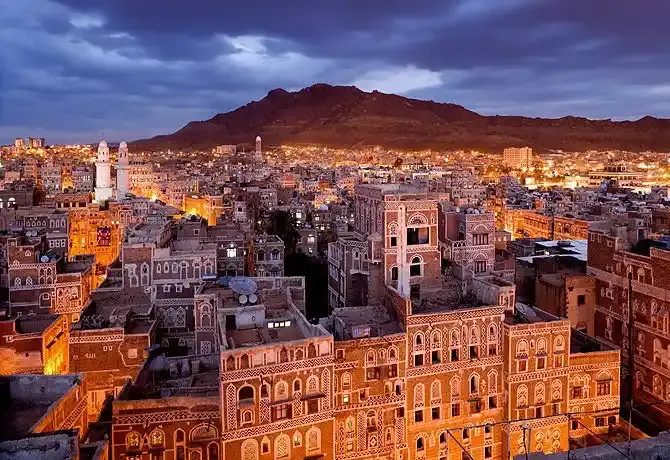
Sana'a, a city that embraces the sky with its minarets and tells the stories of time with its walls, stands tall as an architectural masterpiece vibrant with history and life. In the heart of Yemen, Sana'a's old houses hide in time, retaining their splendor and beauty that is not affected by the vicissitudes of the ages. More than just residences, these houses represent a rich history and culture dating back thousands of years.
Show key points
- Old Sana'a stands as a living testament to Yemen's architectural brilliance and cultural heritage, with structures that have endured for over 2,500 years.
- The city's ancient houses, made of clay and decorated with intricate carvings and colorful designs, showcase the artistry and skill of Yemeni craftsmen.
- Narrow alleys, bustling markets, and majestic gates vividly reflect the civilization and social fabric of ancient Yemen.
- ADVERTISEMENT
- Each of Sana'a’s historic gates—like Bab al-Yemen and Bab Shu'ub—carries a unique name and significance that narrates stories of the city's religious, economic, or social past.
- The design of these traditional homes is both functional and communal, with inner courtyards, reception rooms, and decorative elements promoting family life and hospitality.
- Preservation efforts led by UNESCO and other organizations are crucial to protecting Old Sana'a’s architectural and cultural identity amidst modern challenges.
- More than structures, Sana'a's houses and gates represent a distinctive identity and legacy, symbolizing the resilience and enduring spirit of Yemeni civilization.
Old Sana'a, with its narrow alleys and bustling markets, reflects a vivid picture of ancient Yemeni civilization. The gates of old Sana'a are testament to the grandeur of the city, representing the boundary separating the outside world from the enchanting world of Sana'a. Each door bears a name, a story, a heritage worth exploring and preserved.
Recommend
In this article, we will travel back in time to discover the beauty of Sana'a's old houses, learn about the names of its ancient doors, and explore the secrets hidden by its mud walls. We will dive deep into history to understand how this city has managed to preserve its identity and heritage despite all the challenges it has faced.
Old Sana'a
Sana'a History: From Past to Present
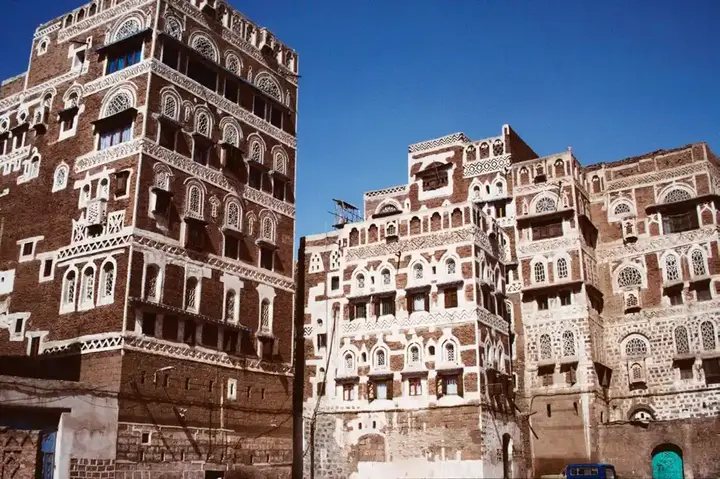
Sana'a, the capital of Yemen, is not just a city, but a symbol of a living history spanning more than 2,500 years. Old Sana'a is one of the oldest inhabited cities in the world, and it bears with it traces of successive civilizations in Yemen. From the Sabaeans and Himyarites to the Turks and the Ottomans, every civilization has left its mark on this ancient city.
Old Sana'a is distinguished by its unique architecture that reflects the cultural and historical diversity of the city. Mud houses decorated with bas-reliefs and bright colors bear witness to the skill of Yemeni craftsmen and craftsmen. These houses, topped with domes and towers, still retain their splendor and beauty over time.
Old Sana'a is a center of commerce and culture, attracting scholars, poets and merchants from all over the world. Traditional souks such as Souk Al Balili and Souk El Salt are bustling with life and offer visitors a unique and unforgettable experience. Sana'a is also famous for its ancient mosques and religious schools, which are centers of science and knowledge.
The history of Old Sana'a is not just an account of events, but a tale of a city that has managed to preserve its identity and rich heritage through the ages.
Architectural design of old houses of Sana'a
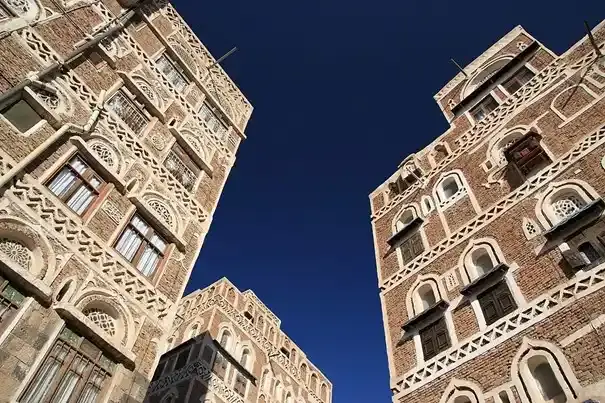
The old houses of Sana'a are a testament to the architectural creativity that has characterized Yemeni civilization through the ages. These houses, with their diverse shapes and bright colors, embody the rich urban heritage of the city. The houses consist of several floors, and are often decorated with intricate wooden windows known as moons, which not only allow the house to be ventilated and lighted, but also give it a unique beauty.
The ground floor in these houses is usually used as a store or as a shop, while the upper floors are dedicated to living. The facades are distinguished by their stucco decoration and white, green and blue colors, which reflect the natural and cultural environment of the city. Flat roofs are an integral part of the design of these houses, as they are used for various social and family activities.
Clay and limestone are essential materials in the construction of these houses, which provides excellent thermal insulation and is suitable for the climatic conditions of the region. The wooden columns and ornate ceilings demonstrate the skill of Yemeni carpenters and craftsmen in using local materials and turning them into works of art.
The architectural design of the old houses of Sana'a reflects not only the aesthetic beauty, but also the social and cultural functions of Yemeni society. It highlights how man has been able to adapt to his environment and create architectural solutions that meet his daily needs and preserve his cultural heritage.
Preserving Sana'a's Old Houses as World Heritage
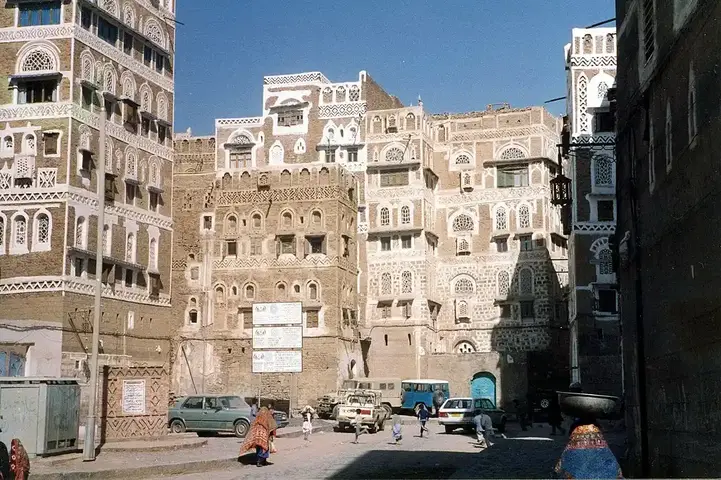
The old houses of Sana'a are an integral part of the world's cultural heritage and represent one of the most prominent examples of traditional clay architecture dating back to early Islamic times. These houses, with their intricate designs and artistic motifs, tell stories of daily and community life in Sana'a through the centuries.
Maintaining these homes is a major challenge, especially in light of the current environmental and social changes. Natural factors such as rain and wind, coupled with human factors such as urban growth and neglect, threaten to erode this unique cultural heritage. Therefore, local and international efforts are being made to protect Sana'a's homes and ensure their continuity as a witness to the history of humanity.
Organizations such as UNESCO have designated Old Sana'a as a World Heritage Site, raising awareness of the importance of these houses and contributing to attracting international support for restoration and maintenance projects. Training workshops and cultural awareness programs are part of efforts to ensure that the necessary knowledge and skills are passed on to future generations, so that they can preserve this great heritage.
Preserving Sana'a's old houses is not only the responsibility of Yemenis, it is a global responsibility that falls on all who appreciate art, history and culture. These houses express Yemeni identity and serve as a source of inspiration for architects, historians and artists around the world. By preserving it, we ensure that old Sana'a remains alive, vibrant with beauty and tradition for generations to come.
Old Sana'a Houses
The unique architecture of Sana'a houses
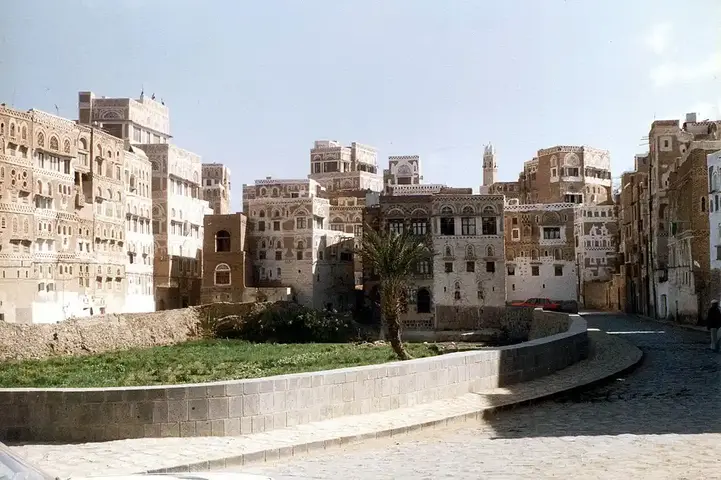
The architecture of the old houses of Sana'a is a vivid example of the creativity and innovation that characterizes Yemeni architecture. These houses, which rise several floors, show a harmonious combination of functionality and artistic beauty. The facades are distinguished by their stucco decorations and intricate geometric shapes, which reflect the artistic and cultural taste of the people of Sana'a.
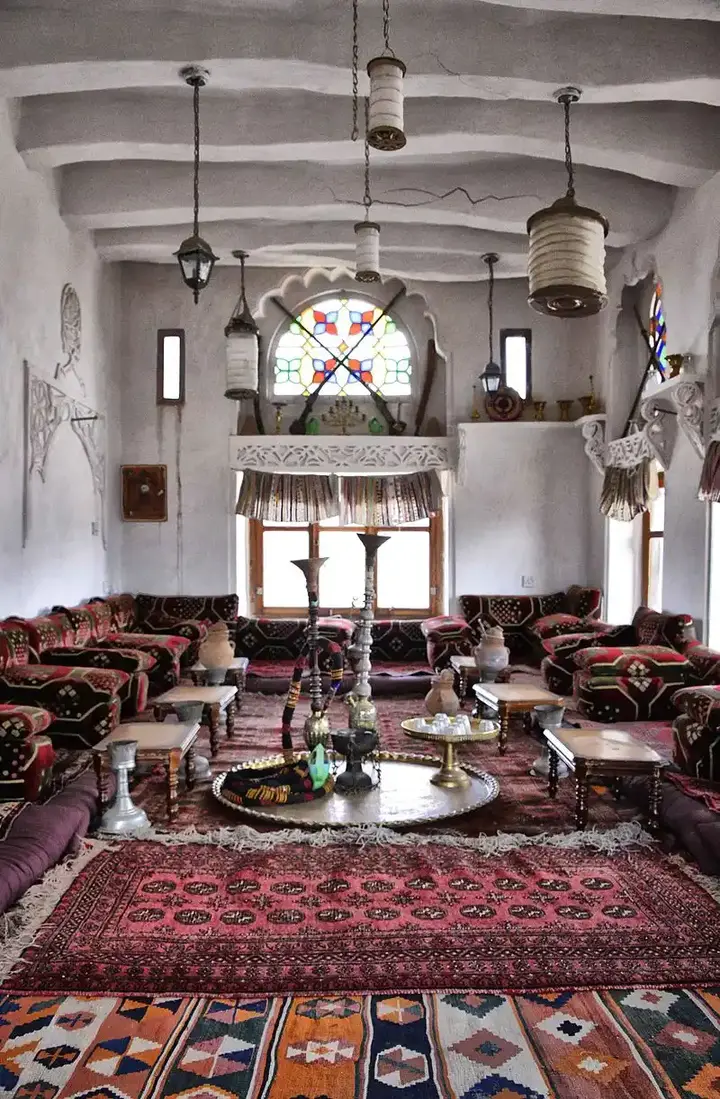
Every house in old Sana'a tells a story through its unique design. Huge wooden doors decorated with brass nails and bas-reliefs welcome visitors, while balconies overlooking the streets add a touch of openness and connection with outdoor life. Qamariyat, the decorative wooden windows that adorn the facades, are a hallmark element of Sana'a architecture, providing natural lighting and ventilation as well as privacy for the inhabitants of the houses.
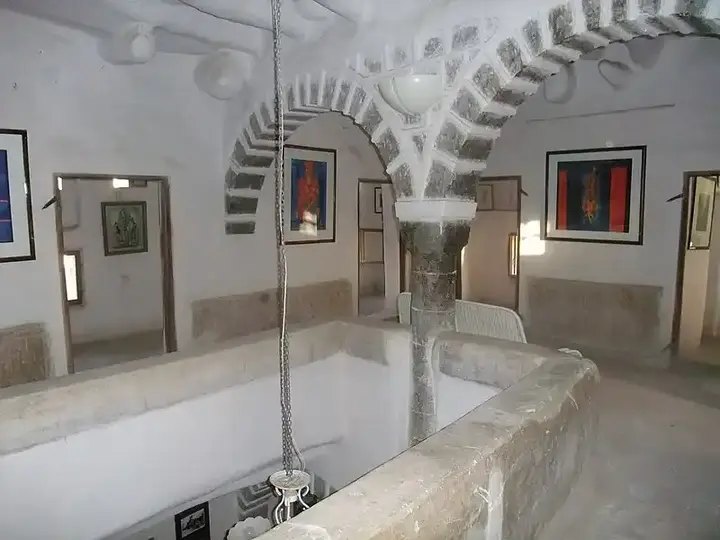
The interior details of Sana'a houses are no less magnificent than the facades, with the walls decorated with frescoes and bright colors, and the floors are covered with mosaics and colored tiles. Natural materials such as clay and stone are used in ways that show high craftsmanship and respect for the local environment.
The architecture of Sana'a houses is not only an expression of the city's cultural identity, but also a testament to the human ability to adapt to the surrounding environment and use available resources efficiently.
Decoration and engravings: the art of home decoration
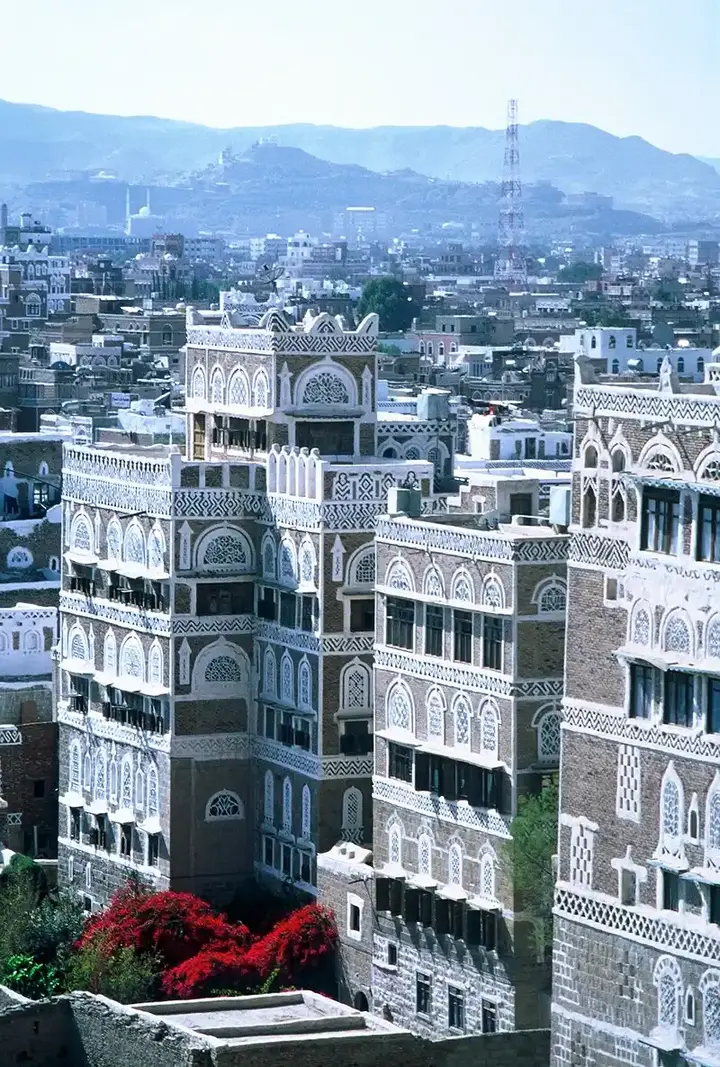
Decoration and inscriptions are an integral part of the architectural identity of Sana'a's old houses, as these aesthetic elements add a touch of luxury and originality to the buildings. The skill of Yemeni craftsmen is evident in the delicate carvings that adorn the doors, windows and interior walls of houses, reflecting a long artistic tradition.
The frescoes covering the facades show a variety of shapes and sizes, inspired by nature and cultural symbols. Flowers, leaves and geometric shapes overlap in a harmony that fascinates the beholder. The decoration is not limited to visual beauty, but also carries connotations and symbols that express Yemeni values and beliefs.
Inside homes, engravings are used to define spaces and add warmth and intimacy to public and private spaces. Bright colors and intricate designs are used to decorate halls and rooms, giving each space a unique character. The moons, with their magnificent wood carvings, are a distinctive element in the interior decoration, as they contribute to the distribution of light and create a charming atmosphere inside the houses.
The decoration and inscriptions in Sana'a houses not only express artistic taste, but are also a documentation of the city's social and cultural history.
Sana'A houses and social life
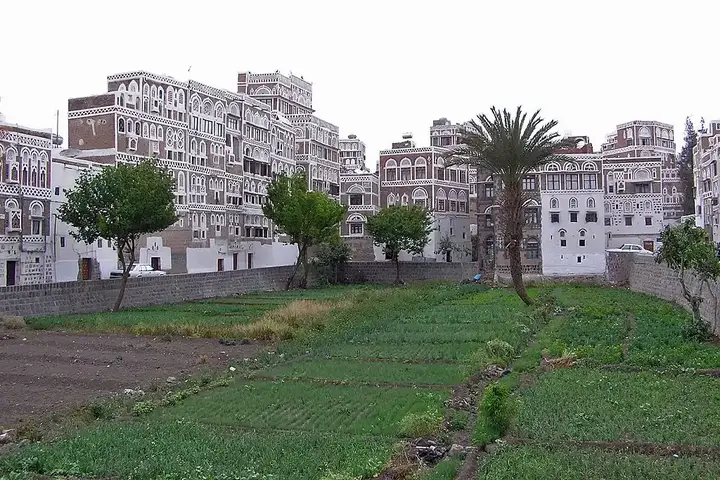
Sana'a's old houses are more than just dwellings; they represent a complex social fabric that reflects family and collective relationships in Yemeni society. These homes are designed in a way that enhances communication and interaction between residents, while maintaining the privacy and independence of each family.
At the heart of every house is the Hosh, an inner courtyard that is the center of family life, where families gather for food, rest and celebrations. Al-Hosh contributes to the ventilation and lighting of the house, and gives a sense of openness and connection to nature.
The upper floors contain majlis, which are reception rooms used to host guests and hold social gatherings. Traditionally decorated with luxurious Yemeni pillows and carpets, the majlis is a place to exchange news, stories and traditions.
The kitchen, locally known as the kitchen, is the beating heart of the home, where traditional meals are prepared and recipes are shared between generations. Food is an essential part of Yemeni culture, expressing generosity and hospitality.
The old houses of Sana'a express a philosophy of life that values human relations and family bonding.
The Old Gates of Sana'a
The role of doors in the history of Sana'a
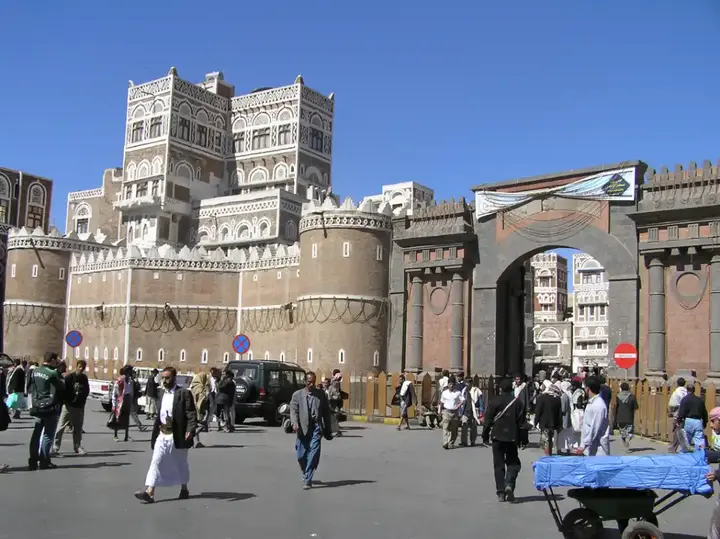
The gates of the old Sana'a are not just entrances to the city, but historical symbols that tell about the nobility and authenticity of the city. These doors, which were used to protect the city and regulate entry and exit, reflect the architectural and artistic architecture of the eras in which they were constructed. The doors were considered part of Sana'a's military defenses, but they were also centers of social gatherings and trade.
Each door of Sana'a bears a name that reflects the nature of the area in which it is located or the purpose for which it was used. For example, Bab al-Yemen, one of Sana'a's most famous gates, was the main gateway to trade routes from the south. Bab al-Sabbah, located on the northern side of the city, was considered a centre of cultural and religious movement.
The doors were closed at night to ensure the safety of the city, and each door had its own guard known as the doorman. These doors were opened in the morning to receive visitors and merchants from various places. In this way, the doors were the expression of Sana'a's social and economic system.
The role of doors in Sana'a's history is not limited to the practical aspect, but extends to the cultural and spiritual aspect of the city.
The names of the old gates of Sana'a and their meanings
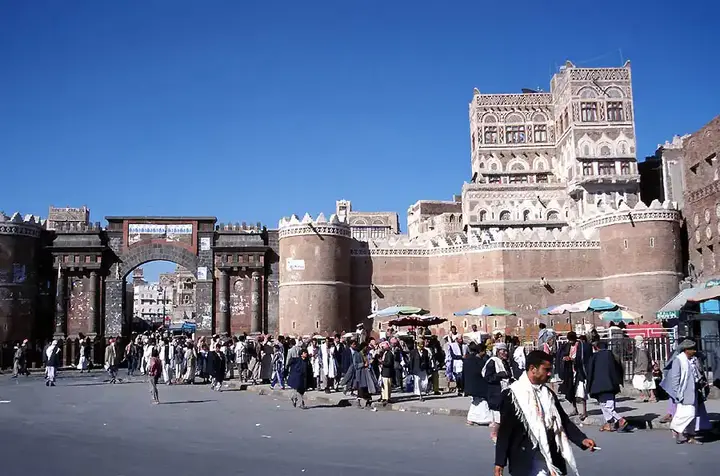
The gates of old Sana'a carry not only a defensive and functional character, but also the culture and history of the city. Each of these doors bears a name that reflects part of Sana'a's identity and tells a story about its ancient past. The names give a glimpse into the social and economic life that took place behind these walls.
For example, Bab al-Yemen, one of the most famous of these doors, refers to its location as the main gateway connecting Sana'a to the rest of Yemen. There is the Bab Shu'ub, which is believed to have been used for trade and communication with the Peoples region. Bab al-Subh, on the other hand, is believed to have been a center of religious and spiritual activity, as its name refers to prayer and praise.
These names are not just random labels, but denotes the roles these doors played in the daily life of the city. They express the trade relations, religious traditions, and social interactions that have shaped the urban fabric of Sana'a.
List of names of the old gates of Sana'a:
• Bab al-Yemen: It is the main gate of the city, located on the southern side.
• Bab Shu'ub: It is located on the northern side of the city.
• Bab al-Sabha: It is located on the western side of the city.
• Bab Al-Shaqadeef: It is located on the eastern side of the city.
• Bab al-Qaa: It is located on the southeastern side of the city.
• Bab al-Sabbah: It is located on the southwestern side of the city.
• Bab al-Rum: It is located in the northwest side of the city.







